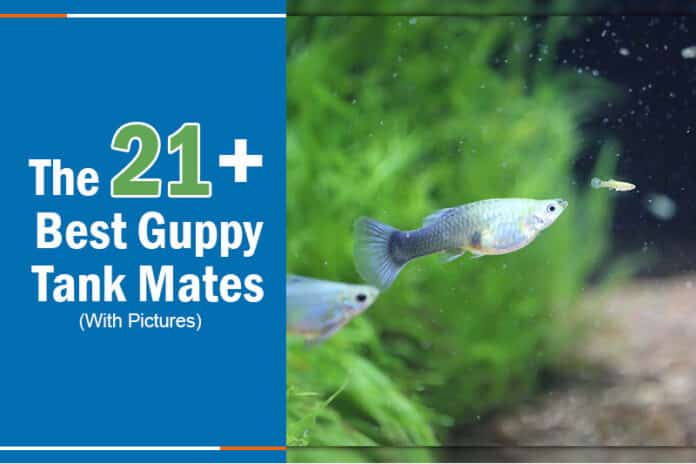Are you constantly wondering which companions would best suit your vibrant guppies? Tired of guesswork and unexpected aquatic clashes? Dive into our comprehensive guide to discover the best guppy tank mates that ensure harmony under the water.
By understanding compatible guppy tank mates, you can create a balanced and serene aquarium setting, keeping your guppies and their pals happily swimming side by side. Don’t leave your aquatic friends’ companionship to chance; let’s find them the perfect tankmate!
How to Choose Guppy Tank Mates
Making a choice about tank buddies for guppies requires a thoughtful approach. Although guppies, being livebearers, are typically amicable and can coexist with many other species, the primary goal should be ensuring every fish feels at home in the tank.
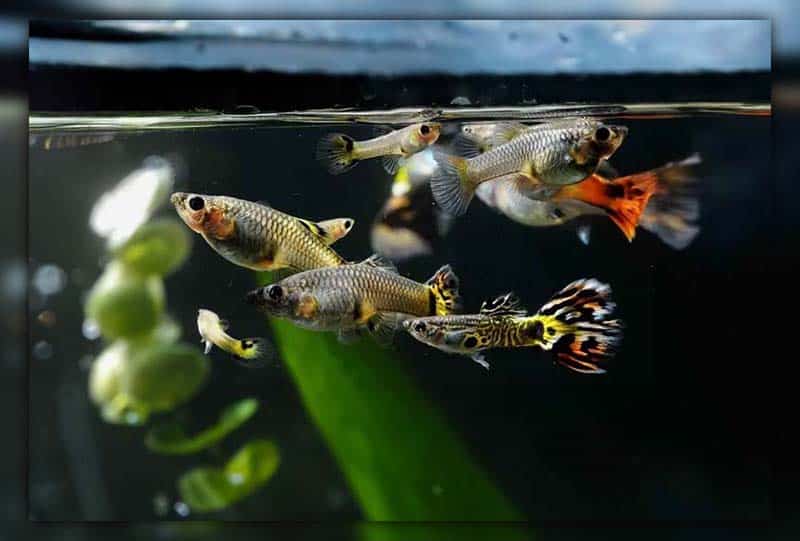
Let’s delve into some considerations for finding the best tank mates for guppy fish:
Water parameters
Guppies thrive in water temperatures ranging from 72 to 82 degrees Fahrenheit, and a pH level of 6.8 to 7.8. It’s essential to select tank mates that share these water preferences. This will pave the way for a healthy and harmonious aquatic environment.
Temperament
Guppies have a peaceful nature, so introducing aggressive or predatory fish is a no-go. Excellent tank companions for guppies include:
- Other livebearers such as platies, mollies, and swordtails.
- Tetras like neon tetras, cardinal tetras, and black neon tetras.
- Rasboras including harlequin rasbora, chili rasbora, and galaxy rasbora.
- Friendly species like corydoras catfish, dwarf gouramis, and bristlenose plecos.
Size
Guppies reach a size of about 2 inches when fully grown. It’s advisable to keep them with fish of comparable size. Bigger fish might see guppies as a snack, so it’s best to avoid that mismatch.
Competition
Guppies have an omnivorous diet with a leaning towards live treats like brine shrimp and bloodworms. It’s wise to steer clear of other omnivorous fish that would vie for the same food, ensuring your guppies get their fair share.
Best Guppy Tank Mates
Guppies, with their vibrant colors and peaceful nature, are a popular choice among aquarists. To complement them, it’s vital to pick tank mates that share similar environmental needs and temperaments.
Other livebearers (platies, mollies, swordtails)
- Scientific Names:
- Platies: Xiphophorus maculatus
- Mollies: Poecilia spp.
- Swordtails: Xiphophorus hellerii
- Average Adult Size: 2-4 inches, depending on species
- pH: 7.0 – 8.2
- Water Temperature: 70-80°F
- Minimum Tank Size: 10-20 gallons, depending on the number of fish and species
- Safe With Guppy Fry?: Mostly, but larger livebearers might eat very tiny fry.
- Recommended School Size: Preferably in groups, with a ratio of 2 females to 1 male to reduce stress on females.
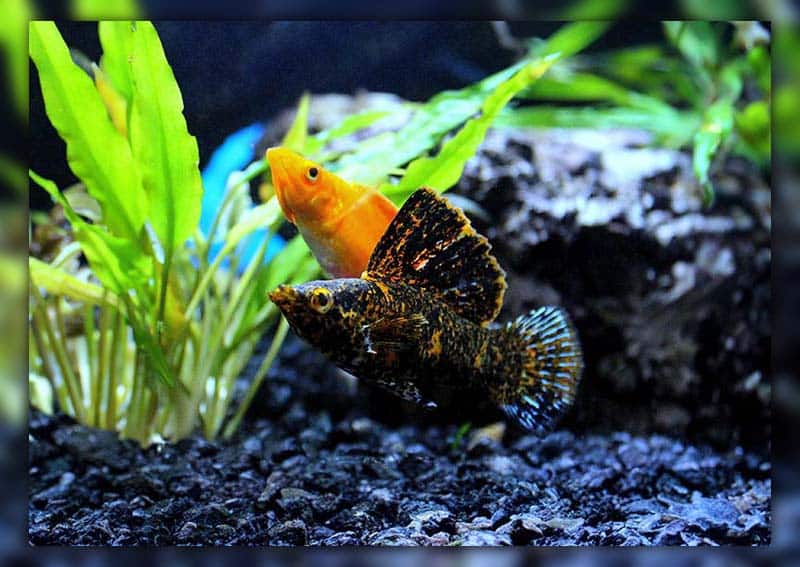
Tetras (e.g., neon tetras, cardinal tetras, black neon tetras)
- Scientific Names:
- Neon Tetras: Paracheirodon innesi
- Cardinal Tetras: Paracheirodon axelrodi
- Black Neon Tetras: Hyphessobrycon herbertaxelrodi
- Average Adult Size: 1-2 inches
- pH: 5.5 – 7.5
- Water Temperature: 70-78°F
- Minimum Tank Size: 10-20 gallons
- Safe With Guppy Fry?: Mostly, but always observe.
- Recommended School Size: 5 or more for best schooling behavior.
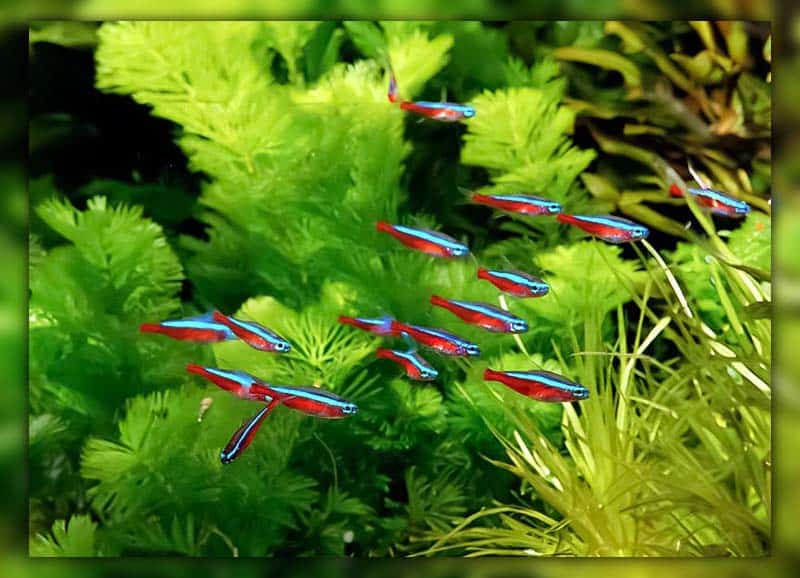
Rasboras (e.g., harlequin rasbora, chili rasbora, galaxy rasbora)
- Scientific Names:
- Harlequin Rasbora: Trigonostigma heteromorpha
- Chili Rasbora: Boraras brigittae
- Galaxy Rasbora (also known as Celestial Pearl Danio): Danio margaritatus
- Average Adult Size: 0.5-2 inches
- pH: 6.0 – 7.5
- Water Temperature: 68-78°F
- Minimum Tank Size: 5-20 gallons, depending on the species
- Safe With Guppy Fry?: Generally safe, but Chili and Galaxy might chase tiny fry.
- Recommended School Size: 5 or more for the best natural behavior.
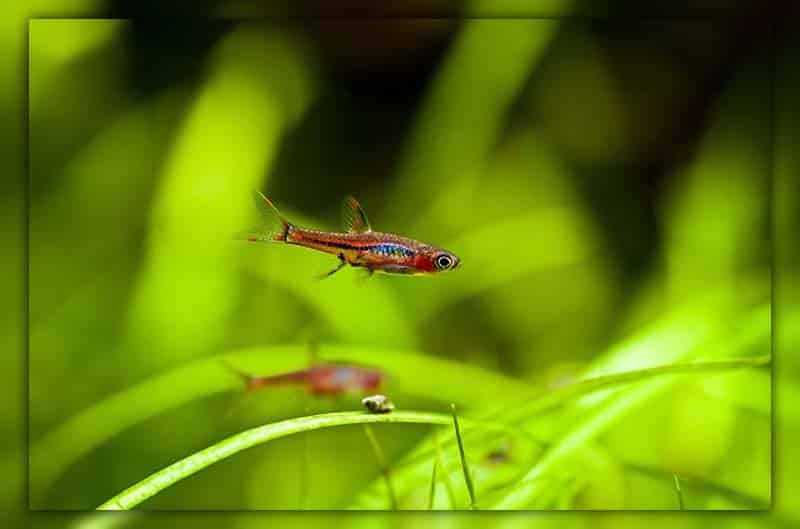
Corydoras catfish
- Scientific Name: Corydoras spp. (There are many species of Corydoras.)
- Adult Size: 1-3 inches (depending on species)
- pH: 6.0 – 8.0
- Water Temperature: 72-78°F
- Minimum Tank Size: 20 gallons
- Safe With Guppy Fry?: Yes
- Recommended School Size: 6 or more (they are social and prefer groups)

Dwarf gouramis
- Scientific Name: Trichogaster lalius
- Adult Size: 2-3 inches
- pH: 6.0 – 8.0
- Water Temperature: 72-82°F
- Minimum Tank Size: 10 gallons
- Safe With Guppy Fry?: Generally, but always observe
- Recommended School Size: Can be kept singly or in pairs
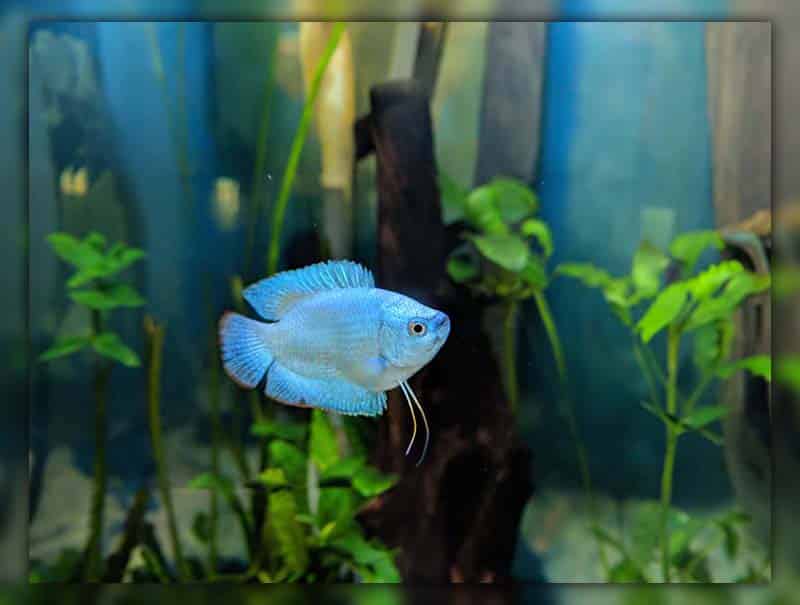
Bristlenose plecos
- Scientific Name: Ancistrus spp.
- Adult Size: 4-6 inches
- pH: 6.5 – 7.5
- Water Temperature: 60-80°F
- Minimum Tank Size: 30 gallons
- Safe With Guppy Fry?: Yes
- Recommended School Size: Can be kept singly
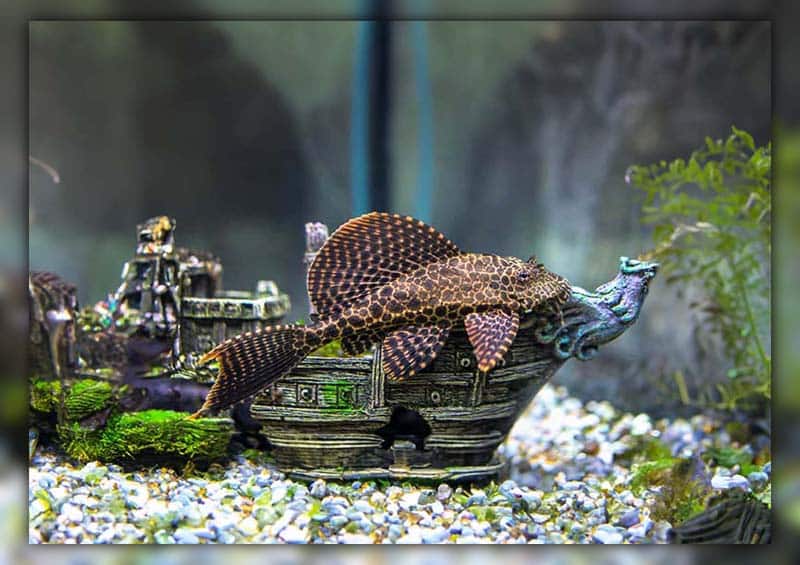
Cherry shrimp
- Scientific Name: Neocaridina davidi
- Adult Size: Up to 1 inch
- pH: 6.5 – 8.0
- Water Temperature: 65-85°F
- Minimum Tank Size: 5 gallons
- Safe With Guppy Fry?: Yes
- Recommended School Size: 10 or more (they thrive in groups)
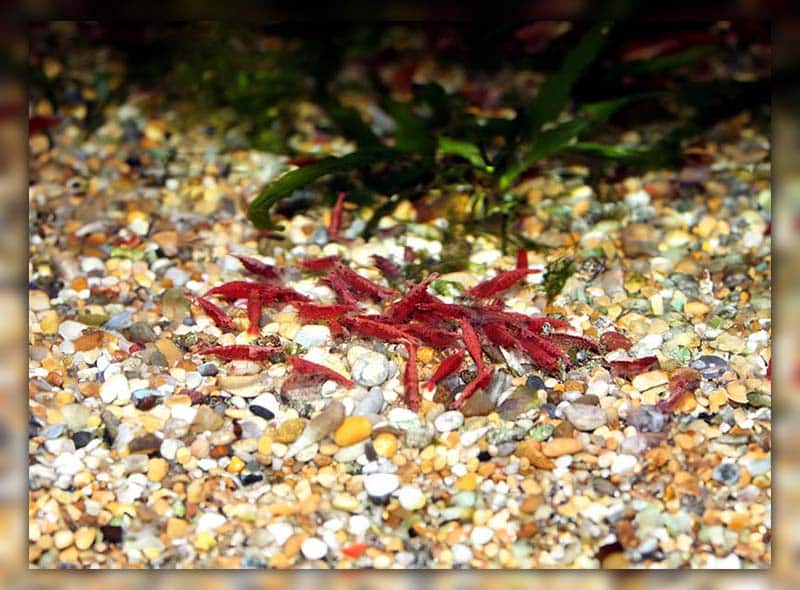
Amano shrimp
- Scientific Name: Caridina multidentata
- Adult Size: 2 inches
- pH: 6.5 – 7.5
- Water Temperature: 70-80°F
- Minimum Tank Size: 10 gallons
- Safe With Guppy Fry?: Mostly, but occasionally they may eat very small fry
- Recommended School Size: 6 or more
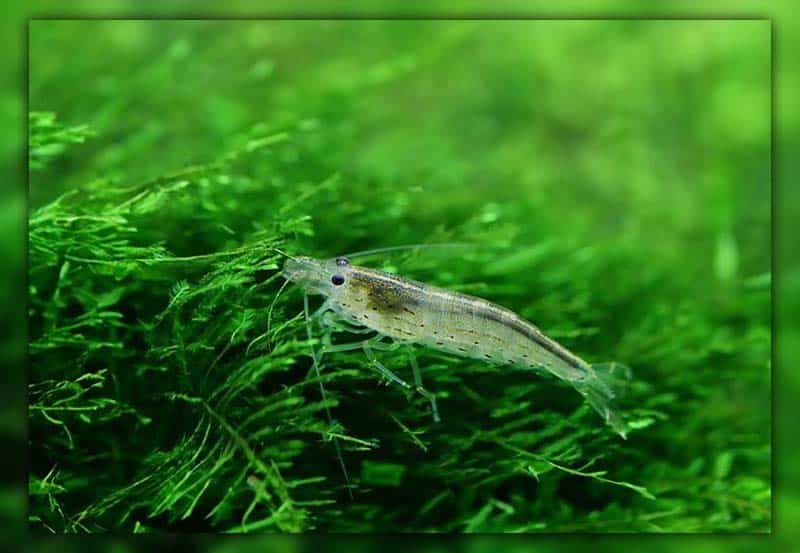
Ghost shrimp
- Scientific Name: Palaemonetes paludosus
- Adult Size: 1.5 inches
- pH: 7.0 – 8.0
- Water Temperature: 65-80°F
- Minimum Tank Size: 10 gallons
- Safe With Guppy Fry?: Mostly, but they might eat very tiny fry
- Recommended School Size: 5 or more
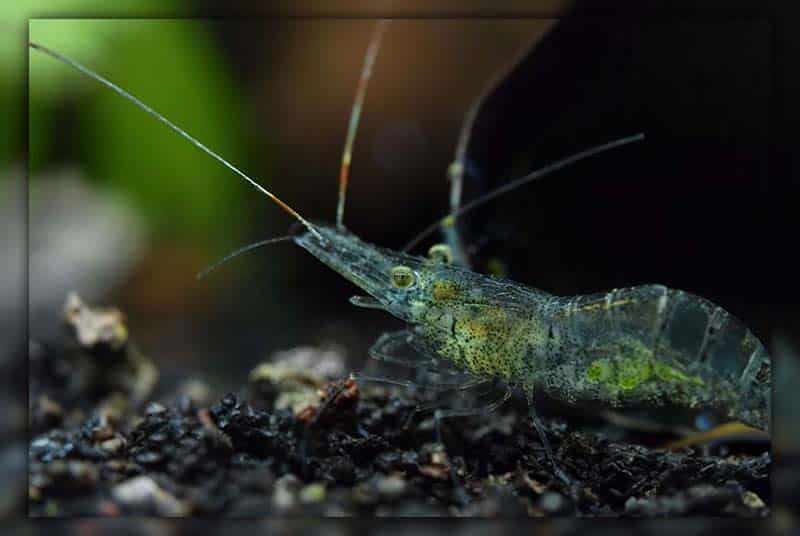
Nerite snails
- Scientific Name: Neritina spp.
- Adult Size: Up to 1 inch
- pH: 7.0 – 8.5
- Water Temperature: 72-78°F
- Minimum Tank Size: 5 gallons
- Safe With Guppy Fry?: Yes
- Recommended School Size: Can be kept singly or in small groups
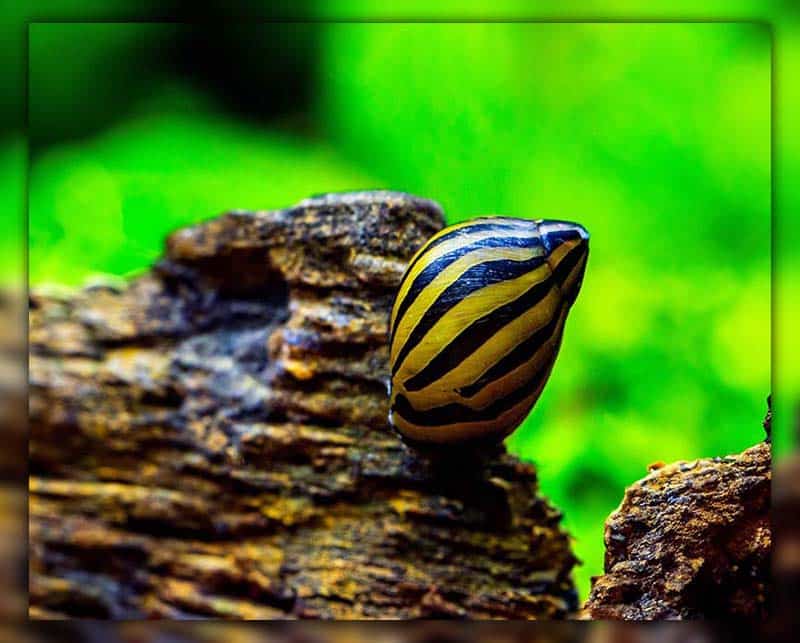
Ramshorn snails
- Scientific Name: Planorbidae family (several species)
- Adult Size: 0.5-1 inch (some species can grow slightly larger)
- pH: 7.0 – 7.5
- Water Temperature: 70-78°F
- Minimum Tank Size: 5 gallons
- Safe With Guppy Fry?: Yes
- Recommended School Size: Can multiply quickly, start with a few
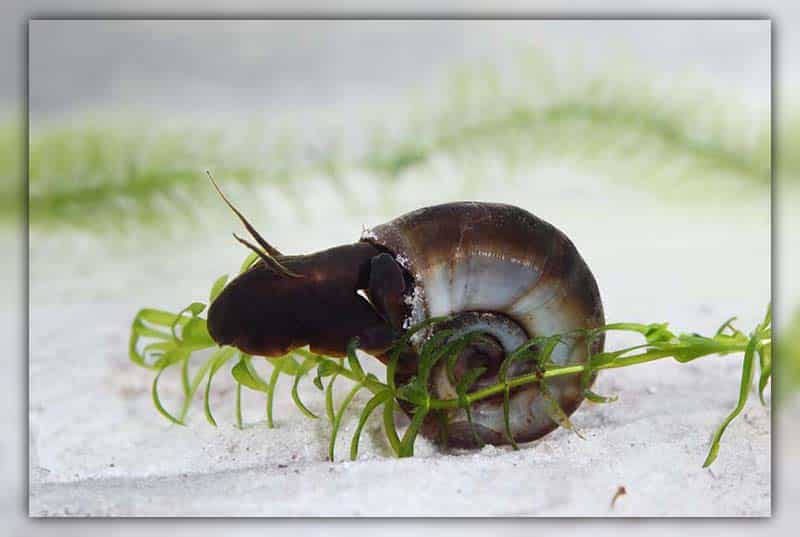
Mystery snails
- Scientific Name: Pomacea bridgesii
- Adult Size: Up to 2 inches
- pH: 7.0 – 7.8
- Water Temperature: 68-84°F
- Minimum Tank Size: 5 gallons (per snail)
- Safe With Guppy Fry?: Yes
- Recommended School Size: Can be kept singly or in pairs/groups
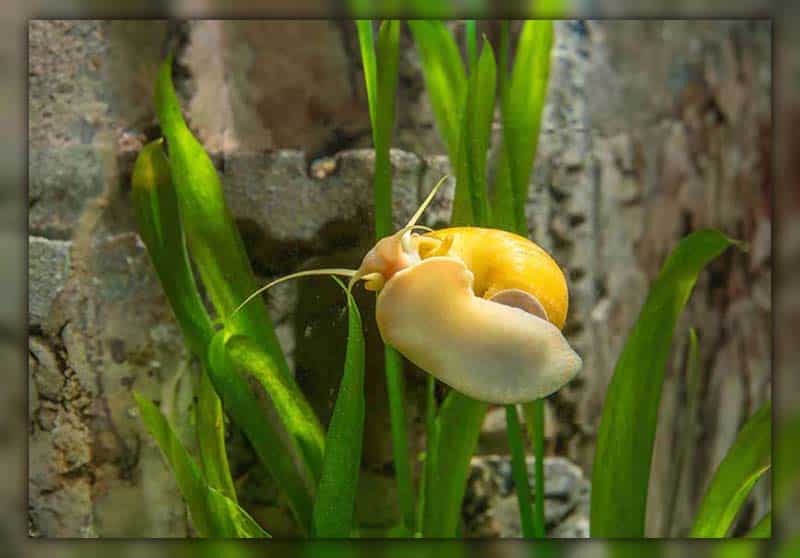
Kuhli loaches
- Scientific Name: Pangio kuhlii
- Adult Size: 3-5 inches
- pH: 5.5 – 6.5
- Water Temperature: 75-86°F
- Minimum Tank Size: 20 gallons
- Safe With Guppy Fry?: Generally, but monitor
- Recommended School Size: 5 or more (they are social)
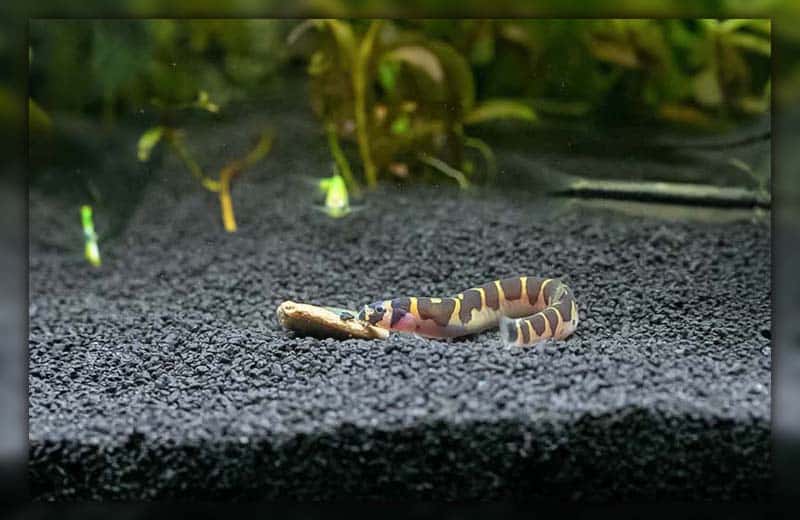
Upside-down catfish
- Scientific Name: Synodontis nigriventri
- Adult Size: 3-4 inches
- pH: 6.0 – 7.5
- Water Temperature: 72-79°F
- Minimum Tank Size: 30 gallons
- Safe With Guppy Fry?: Mostly, but keep an eye out
- Recommended School Size: 3 or more
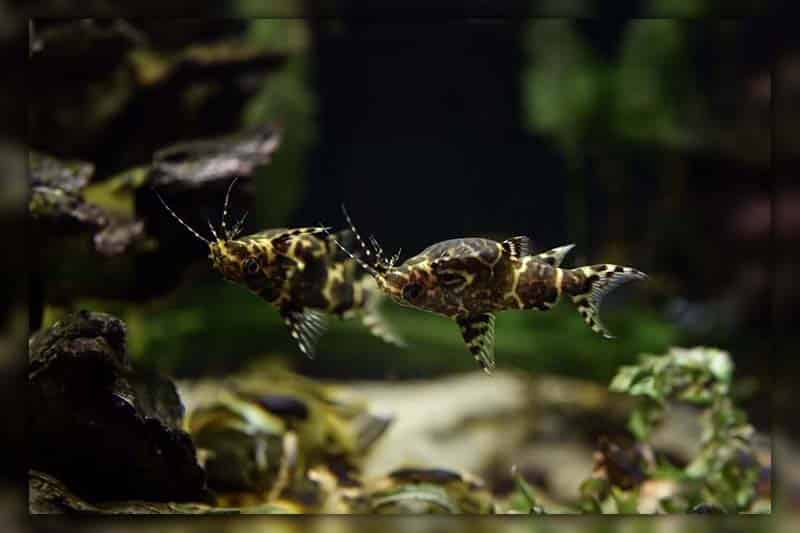
White cloud mountain minows
- Scientific Name: Tanichthys albonubes
- Adult Size: 1.5 inches
- pH: 6.0 – 8.0
- Water Temperature: 60-72°F (They can tolerate cooler temperatures.)
- Minimum Tank Size: 10 gallons
- Safe With Guppy Fry?: Yes
- Recommended School Size: 6 or more
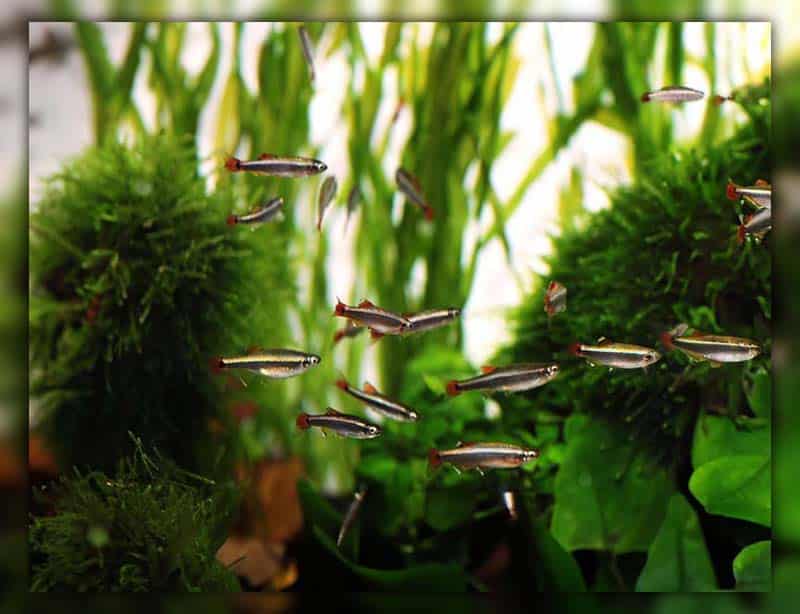
Zebra danios
- Scientific Name: Danio rerio
- Adult Size: 2 inches
- pH: 6.5 – 7.2
- Water Temperature: 65-77°F
- Minimum Tank Size: 10 gallons
- Safe With Guppy Fry?: Mostly, but might chase tiny fry
- Recommended School Size: 5 or more
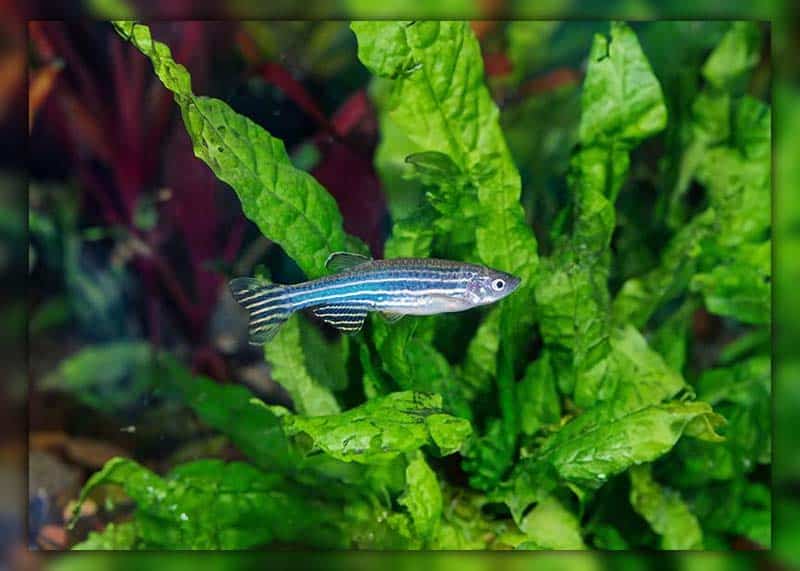
Rosy barbs
- Scientific Name: Pethia conchonius
- Adult Size: 6 inches
- pH: 6.0 – 8.0
- Water Temperature: 64-72°F
- Minimum Tank Size: 30 gallons
- Safe With Guppy Fry?: No, they may eat them
- Recommended School Size: 5 or more
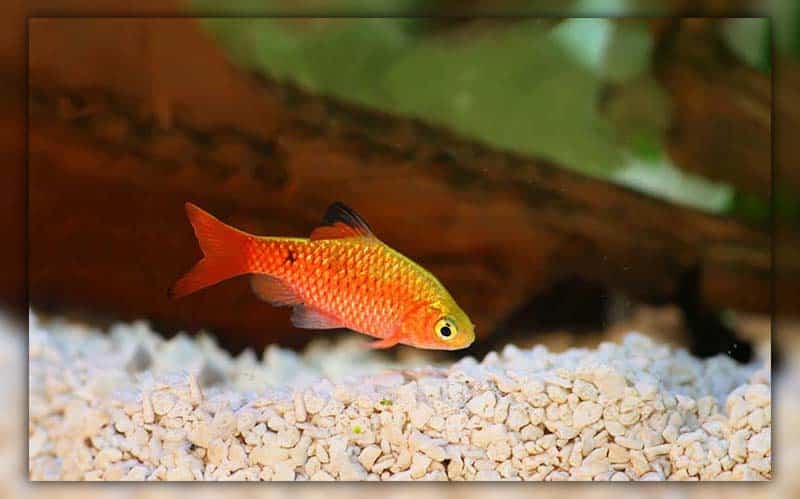
Cherry Barb
- Scientific Name: Puntius titteya
- Adult Size: 2 inches
- pH: 6.0 – 8.0
- Water Temperature: 73-81°F
- Minimum Tank Size: 20 gallons
- Safe With Guppy Fry?: Mostly, but monitor closely
- Recommended School Size: 6 or more
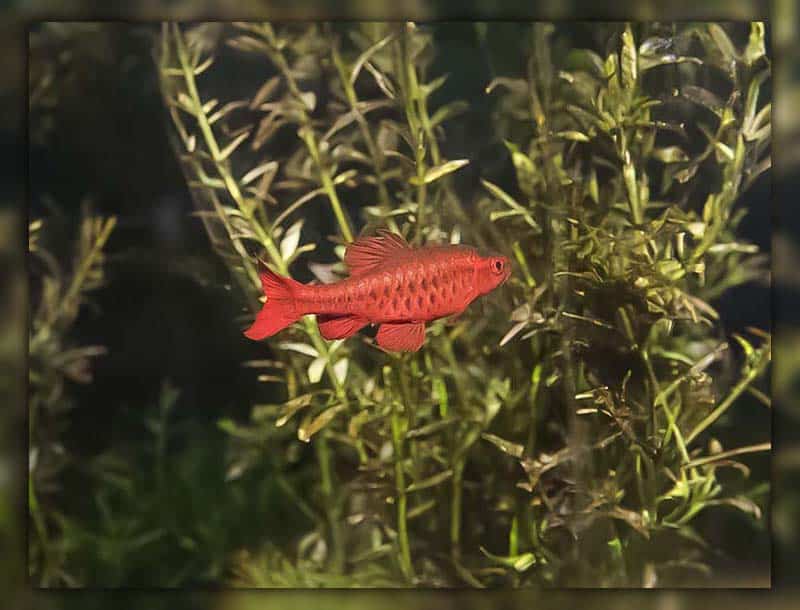
Honey gouramis
- Scientific Name: Trichogaster chuna
- Adult Size: 2-3 inches
- pH: 6.0 – 7.5
- Water Temperature: 72-82°F
- Minimum Tank Size: 10 gallons
- Safe With Guppy Fry?: Mostly, but always observe
- Recommended School Size: Can be kept singly or in pairs
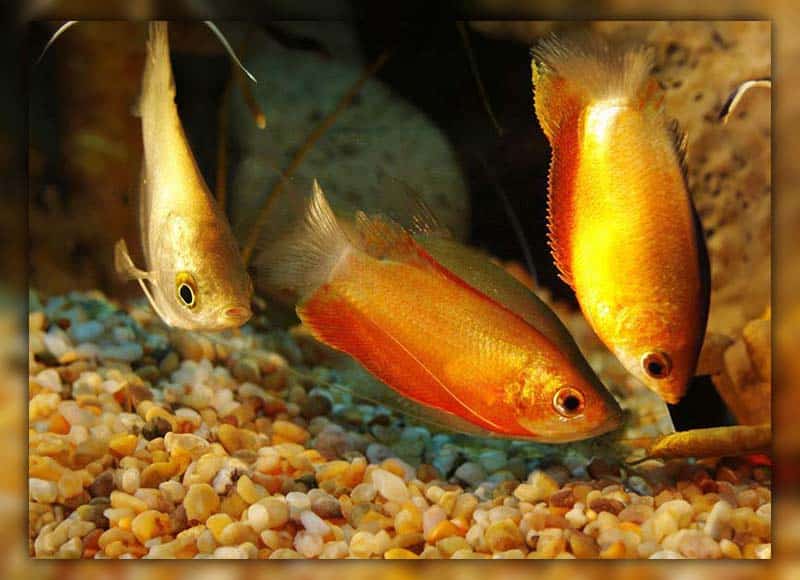
Sparkling gouramis
- Scientific Name: Trichopsis pumila
- Adult Size: 1.5 inches
- pH: 6.0 – 8.0
- Water Temperature: 77-83°F
- Minimum Tank Size: 10 gallons
- Safe With Guppy Fry?: Mostly, but monitor closely
- Recommended School Size: 4 or more
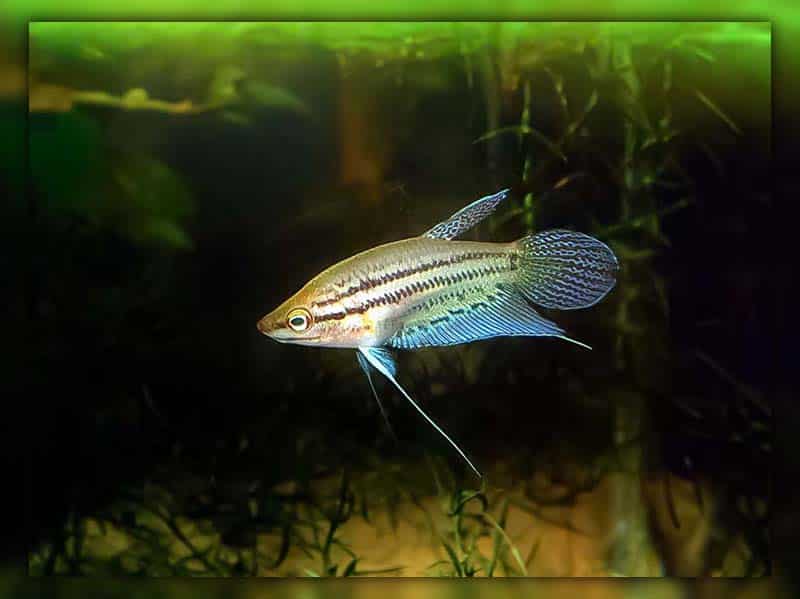
Pearl gouramis
- Scientific Name: Trichopodus leerii
- Adult Size: 4-5 inches
- pH: 6.5 – 8.0
- Water Temperature: 77-82°F
- Minimum Tank Size: 30 gallons
- Safe With Guppy Fry?: Generally, but keep an eye out
- Recommended School Size: Can be kept singly or in pairs
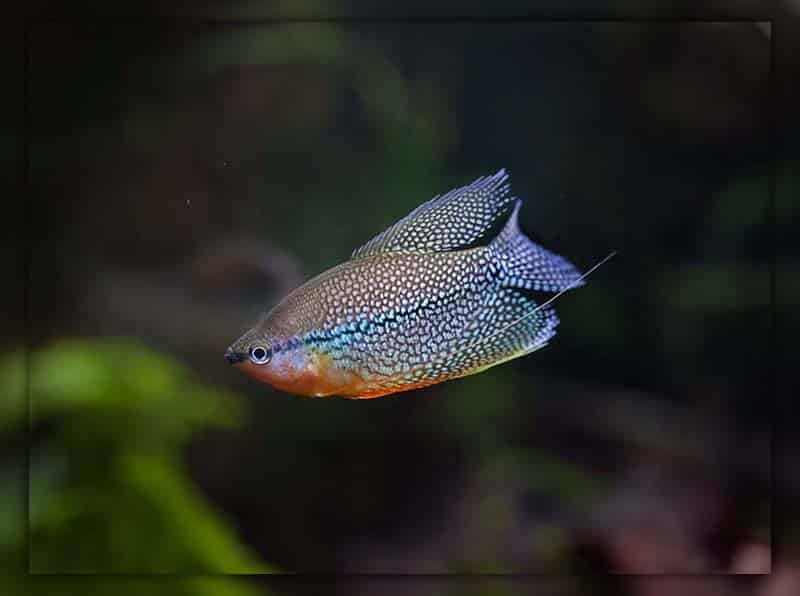
Betta fish (female only)
- Scientific Name: Betta splendens
- Adult Size: 2.5 inches
- pH: 6.5 – 7.5
- Water Temperature: 76-82°F
- Minimum Tank Size: 5 gallons for a single Betta
- Safe With Guppy Fry?: Monitor closely, as Bettas can be unpredictable
- Recommended School Size: Can be kept singly. Female Betta sororities (groups) are possible but require careful planning and monitoring.
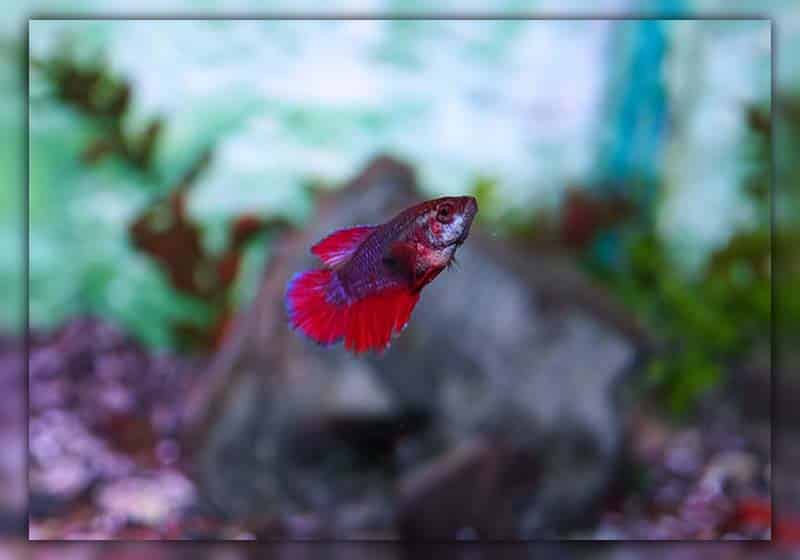
Conclusion
In summary, finding the best guppy tank mates is an essential step in ensuring a harmonious and vibrant aquarium. By selecting the right companions, you not only enhance the beauty of your tank but also contribute to the well-being of your guppies.
Want to dive deeper into the world of aquatics? Don’t miss out on more insightful blogs and guides from National Park Aquarium. We’re here to help you on your journey to creating the perfect underwater haven.
See more:
13 Best Betta Tank Mates & Companions (4 To Avoid)

